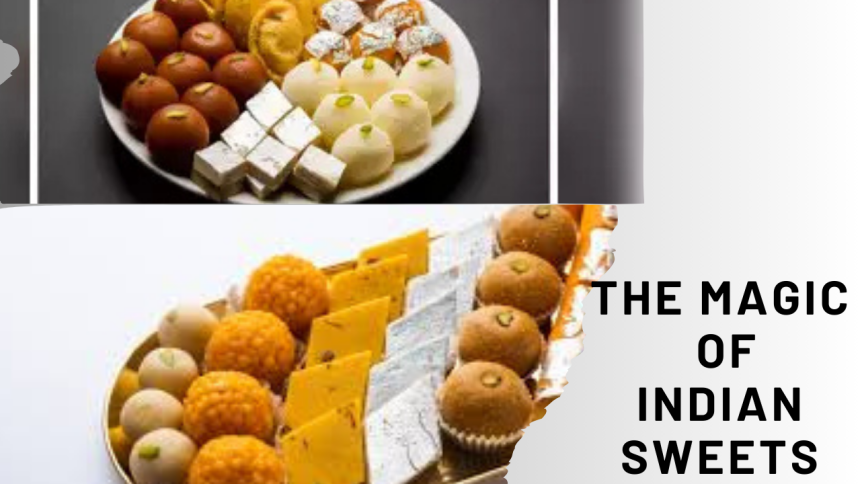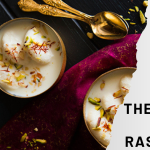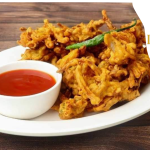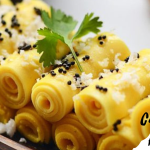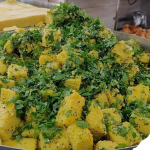India, a country known for its vibrant culture and diverse cuisine, has a treasure trove of sweet treats as varied as its regions. From melt-in-your-mouth laddoos to sticky gulab jamuns and creamy kheer, The Magic of Indian Sweets encapsulate the essence of the country’s love of dessert. Established profoundly in convention, these confections are not fair nourishment but a celebration of bliss, legacy, and togetherness.
If you’ve ever pondered what makes Indian desserts so powerful and one of a kind, let’s take a delightful travel through their history, fixings, and territorial specialties.
Why Indian Desserts Are Unique
What sets The Magic of Indian Sweets separated from the rest? It’s the culminate adjust of flavors, a orchestra of surfaces, and the implantation of outlandish fixings like saffron and cardamom.
Rich Fixings: Indian desserts regularly utilize drain, ghee (clarified butter), sugar, and dry natural products as base ingredients.
Exotic Flavors: Mixtures of saffron, rose water, and cardamom raise the taste profile.
Cultural Importance: Each celebration, wedding, and devout ceremony in India highlights an cluster of The Magic of Indian Sweets.
Whether it’s the rich goodness of kheer or the firm layers of jalebi, each chomp tells a story of convention and celebration.
A Sweet Walk Through History
The roots of Indian sweets can be followed back to old times when desserts were made utilizing characteristic sweeteners like nectar and jaggery. Over time, as exchange courses opened and culinary impacts from Persia and the Mughal realm poured in, the dessert scene in India got to be wealthier and more diverse.
Mughal sovereigns, for occurrence, presented rich pastries like shahi tukda and firni, whereas territorial varieties of conventional desserts advanced with neighborhood ingredients.
The Key Fixings That Characterize Indian Desserts
Indian desserts owe their special taste and surface to a few staple fixings. Let’s break them down:
Milk and Dairy: From paneer to condensed drain, dairy shapes the establishment of numerous desserts.
Sugar and Jaggery: Whereas refined sugar is broadly utilized, conventional formulas regularly incline toward the wealthy, natural flavor of jaggery.
Flour and Grains: Besan (gram flour), semolina, and rice flour are common bases for numerous treats.
Spices and Aromatics: Cardamom, saffron, and rose water include a fragrant touch.
Nuts and Dry Natural products: Almonds, cashews, and pistachios are fundamental for embellishing and including crunch.
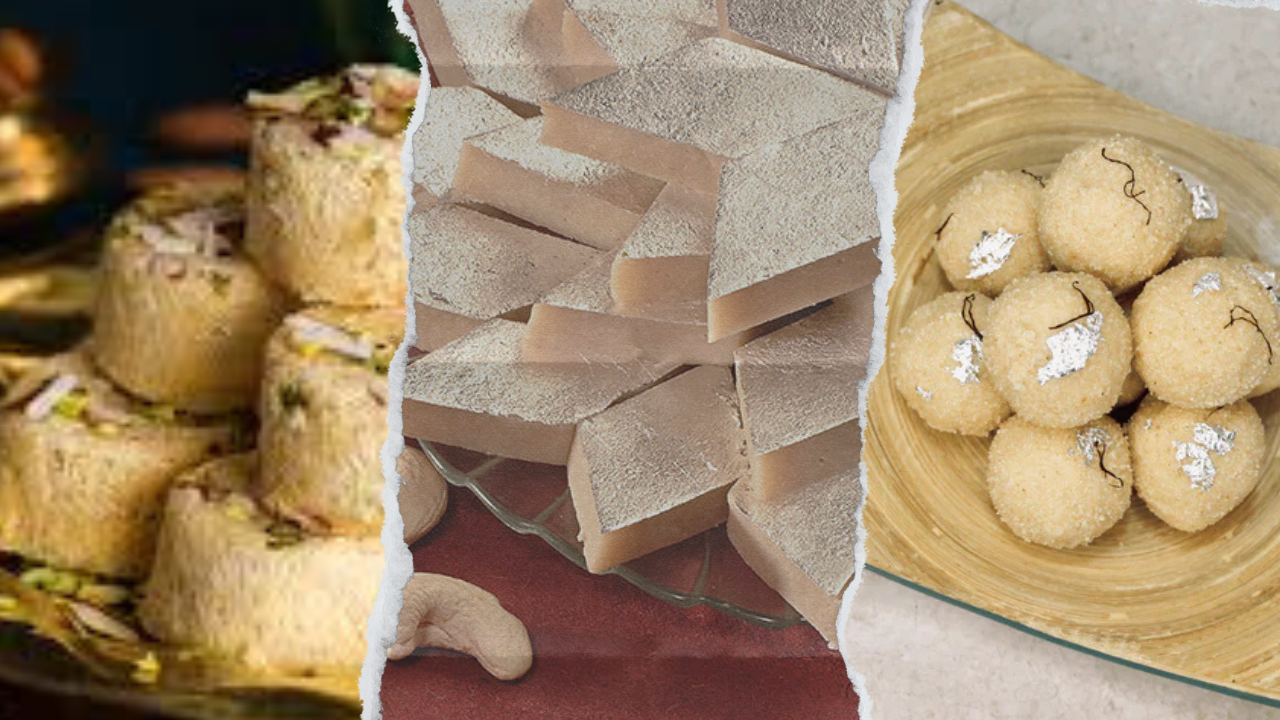
Top Conventional Indian Desserts You Must Try
If you’re unused to Indian pastries or basically need to investigate more, here are a few must-try classics:
Gulab Jamun
Soft, springy dumplings splashed in rose-flavored sugar syrup, gulab jamuns are a staple at nearly each celebration.
Best Delighted in: Warm with a scoop of vanilla ice cream.
Rasgulla
A Bengali delicacy made from chenna (Indian house cheese) and drenched in light sugar syrup, rasgullas are known for their springy texture.
Pro Tip: Serve chilled for a reviving treat.
Kheer (Rice Pudding)
Creamy, tasty, and flavored with cardamom and saffron, kheer is consolation nourishment in dessert form.
Perfect Matching: Embellish with chopped nuts and appreciate warm or cold.
Jalebi
Deep-fried spirals drenched in saffron syrup, jalebis are fresh on the exterior and delicious on the inside.
Street Nourishment Enchant: Best eaten new and hot from roadside vendors.
Ladoo (Different Types)
Made with a assortment of fixings like besan, coconut, and boondi, ladoos are circular balls of sweet bliss.
Festival Favorite: A must-have amid Diwali celebrations.
Barfi (Drain Fudge)
A thick and sweet confection made with condensed drain, barfi comes in flavors like pistachio, coconut, and chocolate.
Presentation Tip: Embellish with silver leaf for an exquisite touch.
Regional Specialties: A Sweet Outline of India
Each locale of India gloats its possess signature desserts, reflecting neighborhood fixings and culinary traditions.
North India: Wealthy and Debauched Delights
Petha (Agra): Translucent, delicate 3d shapes made from cinder gourd.
Balushahi: A flaky, deep-fried sweet comparable to a coated doughnut.
South India: Coconut and Jaggery Heaven
Mysore Pak (Karnataka): A wealthy gram flour fudge.
Payasam (Kerala): A more slender adaptation of kheer made with coconut milk.
East India: Light and Syrupy Treats
Sandesh (West Bengal): A light, paneer-based sweet.
Chhena Poda (Odisha): A caramelized heated dessert made with chenna.
West India: Nutty and Flavorful Confections
Shrikhand (Maharashtra): Sweetened hung curd flavored with cardamom.
Basundi (Gujarat): Thickened drain dessert implanted with spices.
Why Saffron and Cardamom Take the Show
Two fixings that characterize the quintessence of Indian desserts are saffron and cardamom.
Saffron: Includes a brilliant tint and intriguing flavor.
Cardamom: Gives a fragrant, hot kick that equalizations sweetness.
Both are regularly utilized together to make sweets that are as fragrant as they are delicious.
Healthier Options for Guilt-Free Indulgence
With changing dietary inclinations, Indian desserts are moreover advancing. Here are a few more advantageous alternatives:
Jaggery-Based The Magic of Indian Sweets: Swap refined sugar with jaggery for a more wholesome treat.
Low-Fat Drain Desserts: Utilize skim drain or plant-based milk.
Sugar-Free Barfis: Sweetened with normal options like dates.
How to Combine Indian Pastries with Meals
Ever pondered which dessert sets best with your feast? Here are a few suggestions:
After Hot Curries: Cool down with rasmalai or kheer.
Post Overwhelming Dinners: Pick for a light sandesh or shrikhand.
With Snacks: Appreciate jalebis with samosas for a conventional combo.
Tips for Making Indian Desserts at Home
Want to attempt your hand at making these delightful treats? Here are a few convenient tips:
Use New Fixings: New drain and high-quality flavors make a world of difference.
Maintain Appropriate Temperature: Take after the formula enlightening carefully to accomplish the right consistency.
Practice Tolerance: Numerous Indian desserts require moderate cooking and exact measurements.
Read More: Cherry Blossoms and City Lights: The Best Time to Visit Japan
Conclusion
Indian desserts are more than fair The Magic of Indian Sweets; they are an encounter filled with cherish, convention, and bliss. Each locale offers its claim delightful flavors, making it incomprehensible not to drop in cherish with these sweet manifestations. So, the another time you need something liberal, let saffron, sugar, and convention direct you to the enchanted world of Indian desserts.

